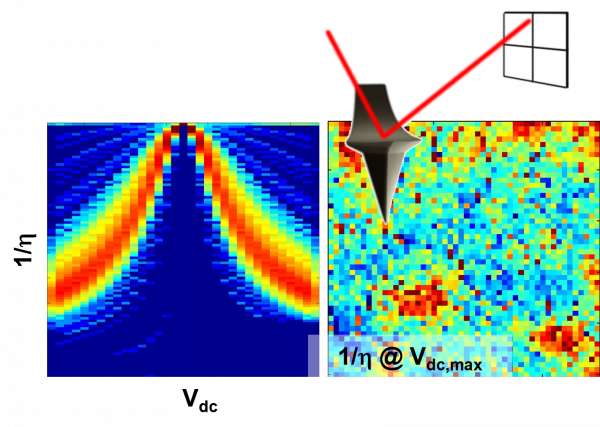Coupling and Control Over Polar Properties
Polarization of materials is at the heart of many applications in energy and information technology often based on the possibility to control polarization through externally applied forces. The action of an electric field, in particular, enacts both linear and non-linear dielectric responses creating rich phenomenology of dipolar glasses, paraelectrics, relaxors, antiferroelectrics, and ferroelectrics. New and unexpected properties can emerge through the coupling of or transition between distinct polar behaviors, including the possibilities to change polar material properties on demand between states of materials that typically do not co-exist.
One way to realize this is the stabilization of out of equilibrium polar phases, often confined to interfaces or surfaces due to broken symmetry, but which are topologically protected. Of fundamental interest are not only intrinsic but also extrinsic polar phenomena which are associated with polar properties introduced by ionic defects which can be controlled via chemical modification routes. The project goal can only be achieved through the fundamental understanding of polar properties and how to transform them on multiple length scales from the atomic to micrometer scale properties which require the development of new probing methodologies and integrated microscopic approaches.
Specifically, this includes (a) polar transitions based on order-disorder phenomena in ferroelectric ion conductors such as CuInP2S6, (b) the coupling of intrinsic and extrinsic polar properties, for example, the coupling of intrinsic polarization with oxygen vacancies, and (c) the creation of new functionality at boundaries of dissimilar polar properties. The discovery of new phenomena is enabled through the quantification of AFM measurables and extraction of polar material properties, for example, the piezoelectric constant, to allow for integration with theory.
Highlights
 |
Piezoresponse force microscopy detects the co-existence of multiple polarization states in van-der-Waals layered CuInP2S6 based on quantification of local piezoelectric responses and comparison with theory.
“Tunable quadruple-well ferroelectric van-der-Waals crystals”, Nat. Mater. 19, 43-48 (2020) |
 |
AFM can be used to measure the normalized inverse tunability of (Ba,Sr)TiO3 through quantified cantilever responses based on electrostriction and highlight the spatial variations of dielectric tunability (red areas show less tunability of the dielectric constant). |
 |
The detailed investigation of cantilever dynamics allows quantifying electromechanical material responses which enable to extraction of functional properties on 10’s of nm length scales which can be compared with complimentary characterization approaches and theoretical predictions. |